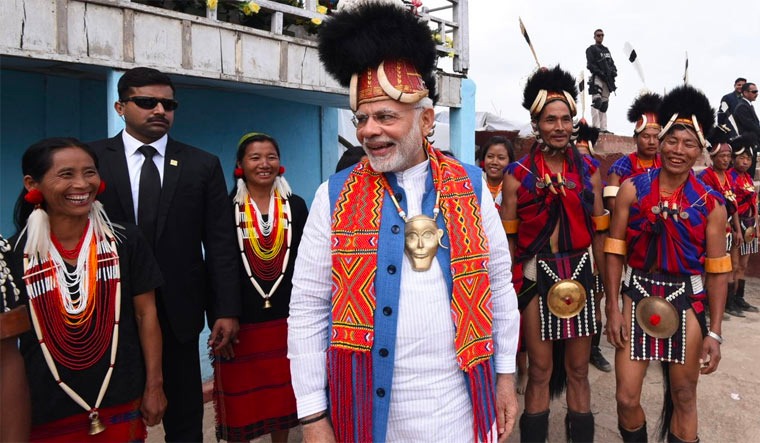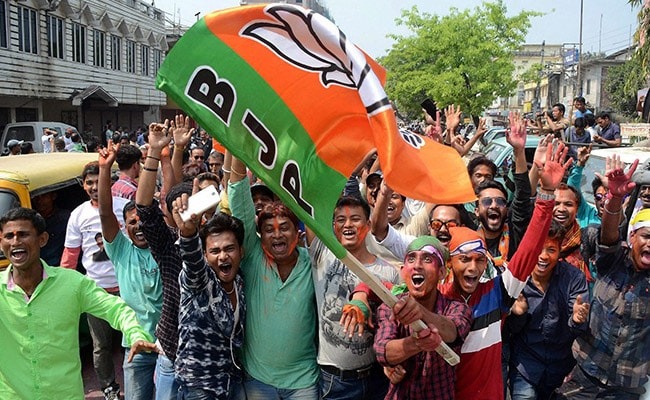Following his resounding victory in 2014, Prime Minister (PM) Narendra Modi was likely the first to recognise decades of neglect towards the North Eastern regions. PM Modi’s “Look East Policy, and Now Act East Policy,” which envisions the North Eastern states as India’s gateway to Southeast Asia, has been a game changer and a cornerstone. When comparing PM Modi’s inclusive governance model to all past succeeding governments and their dogmatic attitude, it is a tragedy that prior governments put the North Eastern states on the sidelines permanently.
PM Modi once said, early in his tenure, “If the country’s western area can develop and other regions can develop, I see no reason why the country’s North Eastern region cannot. It is my firm belief that we must bring this region up to speed with the rest of the country’s developed regions.” And the Bhartiya Janata Party has benefited from this paradigm shift, as evidenced by another electoral success in Tripura, Nagaland, and Meghalaya.
In Tripura, the Bharatiya Janata Party (BJP) received 1.36 per cent of the vote in the 2013 Assembly elections, which increased to 43.56 per cent in 2018. The BJP-IPFT combination regained power in 2023, capturing 33 of the state’s 60 seats.
The BJP and its ally, the Nationalist Democratic Progressive Party (NDPP), crossed the majority threshold in Nagaland, capturing 34, 12 and 22 seats, respectively.
Conrad Sangma’s National People’s Party (NPP) won 26 of the state’s 60 seats and allied with the BJP after calling Amit Shah to seek the BJP’s blessings and help create the next new government.
Since the beginning of the Modi administration in 2014, militancy incidents have decreased by 74 per cent, deaths of security personnel and civilians have reduced by 60 per cent and 84 per cent, respectively, and with an 800 per cent increase in extremist surrenders, AFSPA has been lifted from some districts for the first time in decades.
The media may charitably attribute the BJP’s successive victory in these states to anti-incumbency, but the BJP has far more reasons than one to return to power. During the last eight years, the Modi administration has spent Rs 3.45 lakh crore on infrastructure in the North East, equaling the total spending over the previous two decades.
Waterways, airways, and highways have become the new symbols of the North Eastern states in the last nine years. The number of airports in the North Eastern Region has increased from nine to sixteen, with the number of flights growing from 900 in 2014 to roughly 1900 in 2023. Prime Minister Modi dedicated the Donyi Polo airport in Itanagar last year, making it not only Arunachal Pradesh’s but also India’s first greenfield airport. The airport, which cost more than Rs 640 crore and spans 690 acres, is the capital city’s first airport capable of landing large jets.
The Modi administration has allocated Rs 1 lakh crore in waterways projects, intending to complete these projects by 2025. In addition, 19 streams in the North East are being planned as national waterways.

The Modi government provided an unprecedented push for connectivity by sanctioning 19 projects with a total expenditure of Rs 77,930 crores to connect the North Eastern area to the national rail system. As unbelievable as it may sound, Arunachal Pradesh and Meghalaya were included in India’s railway map for the first time in 2014, even after seven decades of freedom. The Janshatabdi express, which connects the North Eastern states of Manipur and Tripura via Assam, was inaugurated in 2021. Last year, the first goods train chugged into Manipur’s Khongsang station, improving connectivity and business in the state. According to Northeast Frontier Railways’ principal public relations officer, Sabyasachi De, 893.82 km of track was converted to broad gauge between 2014 and 2022, 386.84 km of new lines were added, 356.41 km of double lines were commissioned, and a survey of 1,578 km of additional lines was completed.
To address the chronic shortage of road infrastructure, the Modi government committed more than Rs. 80,000 crores under the Special Accelerated Road Development Plan in the Northeast (SARDP-NE) and an additional Rs 30,000 crore through the Bharatmala project. According to research, 237 projects have been performed in the last five years, with around 3,099 km of road connectivity being developed across various sections of the Northeast. Prime Minister Modi dedicated India’s longest rail-to-road bridge, the double-decker Bogibeel bridge, in 2018. The 4.94-kilometre-long bridge, which cost Rs 5,900 crore to build, is intended to play an essential part in the defence movement along the India-China border in Arunachal Pradesh.
Since the beginning of the Modi administration in 2014, militancy incidents have decreased by 74 per cent, deaths of security personnel and civilians have reduced by 60 per cent and 84 per cent, respectively, and with an 800 per cent increase in extremist surrenders, AFSPA has been lifted from some districts for the first time in decades.
“It is a 17,000-foot-high region where not even a blade of grass grows. Ladakh is a barren, inhospitable wasteland. There isn’t a single blade of grass growing there. We have no idea where it was.” Former Prime Minister Jawaharlal Nehru’s words about Aksai Chin, the north-eastern end of India’s crown, bounced off the walls of the world’s greatest democracy’s parliament. Nehru’s blunder cost India 37,244 square kilometres. But it takes two to tango. The three states’ verdict also underscores the Modi administration’s efforts since 2014 to move “Delhi”—the Government of India—to the doorstep of the North East region. Prime Minister Modi has visited the Northeast area more than 50 times in the last eight years, and nearly 400 federal ministers have planned necessary excursions to north-eastern states.
The Modi administration has ensured the highest-ever participation in the Union Council of Ministers, where there are two cabinet ministers and three ministers of state, in an attempt to remove psychological barriers and a dogmatic approach toward the North Eastern states. In preparation for the 2024 Lok Sabha elections, the BJP’s successive victory in all three states says eloquently about the Modi government’s proactive shift in attitude. It is an indictment that the North East was never subject to the tyranny of distance.




















Comments